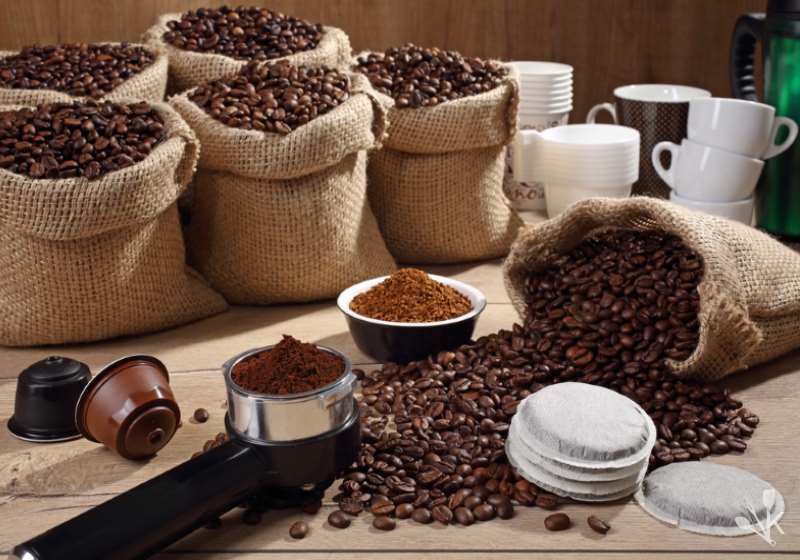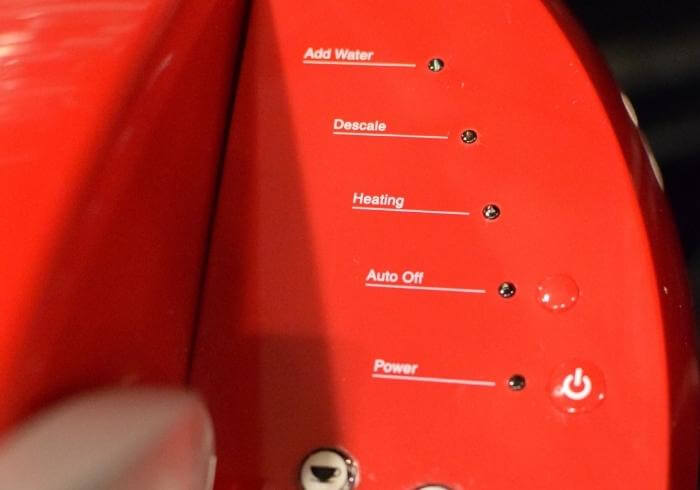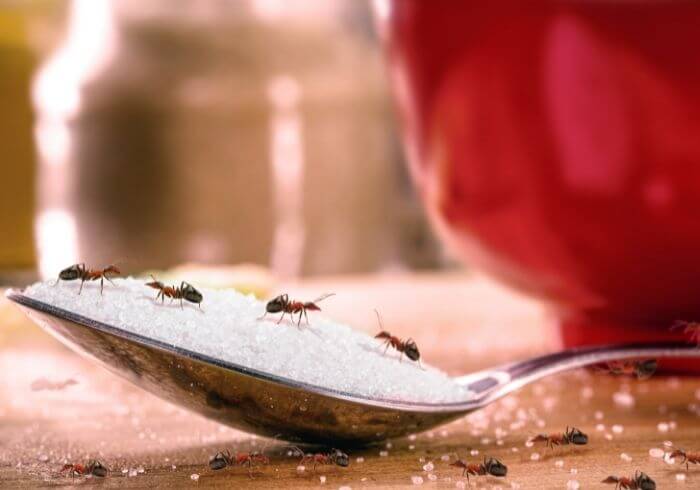The flavor and aroma of coffee are synonymous with morning in many parts of the world.
While all coffee comes from coffee beans, the treatment of the beans after picking can result in markedly different results, including caffeine content.

Coffee beans are green when they’re picked, have little odor and taste a bit like grass. It is at this point that they provide the most caffeine.
Each step in the coffee roasting process lessens the amount of caffeine in the final beverage.
The Difference Between Coffee Roasts
There are four fundamental coffee roast types. They are:
1) Light Roast
This roasting process brings beans to an internal temperature of 350 to 400 degrees Fahrenheit / 180 to 200 degrees Celsius.
This roasting expands the beans. At the highest roasting temperature in this range, the beans will come close to their first “crack” or pop.
- Before first crack is known as a cinnamon roast.
- After first crack is often referred to as a light roast or a New England roast.
Per authorities at Coffee Crossroads, some drinkers find coffee made with this roast to taste grainy.
2) Medium Roast
This roasting step elevates the internal bean temperature to second crack, generally up to no higher than 428 degrees Fahrenheit / 220 degrees Celsius.
These beans lose a bit more caffeine, but are not roasted to the point of exuding oil onto the surface of the bean, reducing the bitterness often found in extremely dark roasts. These roasts feature names including Breakfast Roast or American Roast.
3) Medium-Dark Roast
The coffee roasting temperature for this roast tops out at 446 degrees Fahrenheit / 230 degrees Celsius. At this temperature, the beans begin to exude oil.
This roast is extremely aromatic and may result in a beverage with some spice to it.
4) Dark Roast
Dark roast has the most traditional coffee flavor, but the least caffeine.
However, there is an exception to the rule. Check out our Death Wish Coffee review and Kicking Horse Coffee Review.
Which roast has the most caffeine? Interestingly enough, the light roast will deliver the biggest energy boost. Dark roast temperatures heat the beans to no more than 480 degrees Fahrenheit / 250 degrees Celsius. Above this temperature, the resulting coffee can develop a taste of tar or charcoal.
Related | How To Store Coffee
Caffeine
Does dark roast have more caffeine?
As previously noted, increasing roasting temperatures actually decrease the amount of caffeine left in the bean, so a lighter roasting temperature is best for a caffeine jolt. Caffeine can also be found in tea leaves and cocoa beans.
Fun facts about caffeine:
- Per Laura Schocker, 80% of adults around the world consume caffeine on a daily basis.
- What country consumes the most caffeine? Finland.
Taste
Developing a taste for coffee starts young in many cultures, and is often a sign of adulthood. However, fans of coffee can spend a lifetime learning about the drink and trying different flavors.
When comparing dark roast vs light roast, drinkers may notice a great change in the level of bitterness and flavor intensity.
Related | Light Roasted Sumatran Coffee
Dark roasts offer tremendous aroma, but the smoky bitterness can be off-putting to some.
The hotter the roasting process, the more intense the coffee aroma will be.
For example, if you’re sampling dark roast vs medium roast, you may not notice a large difference in the taste but will find a great variety of aromas between the roasts. Medium roast coffee offers a hearty flavor, but a much less intense aroma.











